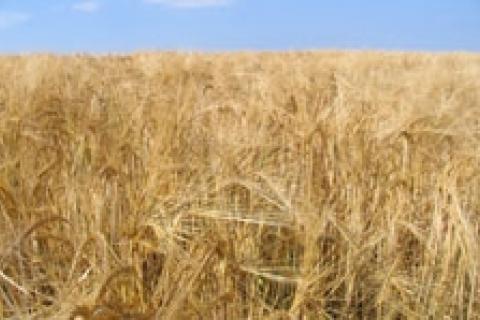
Everyone who dabbles in food plots and deer habitat management develops favorite plants for the various seasons. After 30 years of experimenting I think I've tried about every seed imaginable, but in this occasional series I'll profile my top picks for various seasons. This doesn't mean other brands or seed types aren't as good, just that these have worked best for me. Since it's winter now, here's my number one plant for providing cold weather forage to deer.
 If you want attract more deer to your property in winter, plant a few plots of wheat. Sure, wildlife seed companies have come up with all kinds of great mixtures for cold weather plantings. But if you want something simple and easy to grow that doesn't put a major dent in the wallet, it's hard to beat plain old winter wheat.
If you want attract more deer to your property in winter, plant a few plots of wheat. Sure, wildlife seed companies have come up with all kinds of great mixtures for cold weather plantings. But if you want something simple and easy to grow that doesn't put a major dent in the wallet, it's hard to beat plain old winter wheat.
If you don't believe me, just ask a farmer. He knows how attractive wheat is to deer. His winter wheat fields are likely blanketed with deer and covered with tracks when foods like corn, soybeans, apples and acorns disappear.
Wheat is easy to grow, inexpensive and high in protein (15-25 percent). And it just gets more and more attractive to deer as winter bears down harder. I've seen deer feeding heavily in my wheat fields with temperatures hovering near zero.
Not only will wheat fields provide good hunting opportunities, they'll nourish the herd and set bucks off on a good nutrition plane when spring antler growing season starts. As deer nip off the top of the wheat shoots, fresh growth emerges that they'll eat again and again.
 For plots you plan to hunt, keep them small and long rather than square in shape. Consider wind direction, so you can set up on them for afternoon hunts. Place them near, but not too close to bedding cover such as a thicket, swamp or brushy ridge knoll. Old fields, natural clearings, timber roads and log landings are good spots. Choose sites that are level and well-drained.
For plots you plan to hunt, keep them small and long rather than square in shape. Consider wind direction, so you can set up on them for afternoon hunts. Place them near, but not too close to bedding cover such as a thicket, swamp or brushy ridge knoll. Old fields, natural clearings, timber roads and log landings are good spots. Choose sites that are level and well-drained.
Clear rocks and debris and kill existing vegetation with Roundup. Give it a week, then disc, plow or till several times. Add 10-10-10 fertilizer or do a test and follow recommendations. Add lime if the pH is below 6.5.
Level the plot and use a spreader or hand-toss the wheat. Put it on thick. This seed only costs about $15-25 for 50 pounds. Disc or till it in lightly, so it's covered only 1/4-3/4 inch.
To make your wheat even more attractive to bucks, mix one or more of these plants with it: Austrian winter peas, crimson clover or oats.
If ever there was a food plot seed for the beginner, winter wheat is it. But even the veteran wildlife manager can benefit from putting in this valuable plant for cold weather nutrition.
- 4242 views

